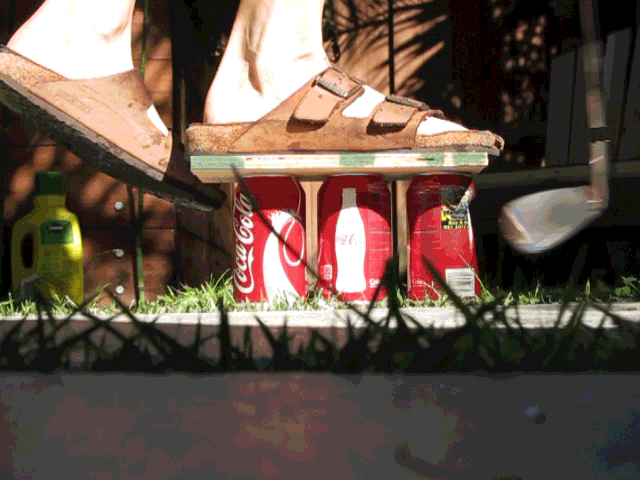The collapse initiation in WTC 1 occurred on the 98th floor, which was only hit by the starboard wing tip and had no core column damage and only a couple of damaged perimeter columns. The twin tower columns had a very high safety factor against gravity induced collapse (at least 3.00 to 1 for the core and at least 5.00 to 1 for the perimeter) so it is hard to understand how one can conclude that the safety factor was completely removed by heating at the 98th floor to effect a collapse.
When you word it that way it can appear your argument makes sense.
But if you take into account the estimated damage to core columns on other floors, the large fires and the redistributed stresses on remaining columns it isn't hard to understand why the building collapsed.
But I grant you if you don't want to understand, you won't.
The fires were very large, the steel spans were long, the heating effects were uneven and likely to undergo thermal expansion which would be completely outside the designed parameters of the building. All bets were off.
Sure, it's possible the buildings could have survived, but they didn't. It's tragic and upsetting. But tragic fires and collapses have happened many times before, not exactly like these, but not entirely unlike them either.
You have chosen to sift through the event with very incomplete knowledge of the inner goings-on (nobody really knows, after all) and declare that the buildings couldn't have collapsed due to fire. But you can't know that, and the evidence says your wrong - they did collapse, and fire is the only provable mechanism.
Put it another way: the fires are a fact, they cannot be denied. Your various alternative theories are not facts, they do not rise to the same level of proof. Without some kind of hard evidence you never get there, and are stuck trying to deny proven facts such as steel failure modes. It's pointless.
Large sections of steel also take a considerable amount of energy to heat which generally requires a significant time to achieve high temperatures in an office fire environment. Additionally, columns can transfer heat away from the fire zone to cooler area. The NIST fire simulation for WTC 7 shows the columns in WTC 7 never reached temperatures above 300 degrees C (a temperature where structural steel has not yet lost any significant strength) and those fires lasted for a much longer time than did the fires in WTC 1.
We're talking about the towers, not WTC 7. The failure modes for 7 were different - thermal expansion, which does not require very high temperatures along those long spans.
Your denial of the idea that steel could be heated to failure is a bit silly when we have many examples of large steel structures failing in fires, like the Kader Toy factory - very quickly. Sure, the building was built like crap, but that's the whole point - the towers were badly damaged and compromised; lots of SFRM was removed from steel, leaving it exposed to fires.
You can't reasonably eliminate fire as the most likely cause for the collapses. That's still the strongest and most supported hypothesis.
I'm not saying that it's impossible to bring a building down with explosives, or maybe even incendiaries. But without conclusive evidence for those other possible explanations they remain weaker hypotheses.
Can you provide any source which shows the temperatures required to remove the safety factor from the columns would have been present on the 98th floor of WTC 1 for a sufficient time to cause the steel to reach those temperatures?
I don't need to, because I don't buy your skew on the failure modes.
I think you'd learn more by performing an independent FEA which could study the fire damage. If you really wanted to study it, I mean. If you just want to force your hypothesis regardless then you don't need another FEA study. I'm very confident that if this were done competently it would corroborate the NIST conclusion in general if not in all details. That's because I think your hypothesis has very low probability, no matter how strongly you believe it.

